The Be Quiet! Pure Loop 280mm AIO Cooler Review: Quiet Without Compromise
by E. Fylladitakis on October 14, 2021 9:00 AM EST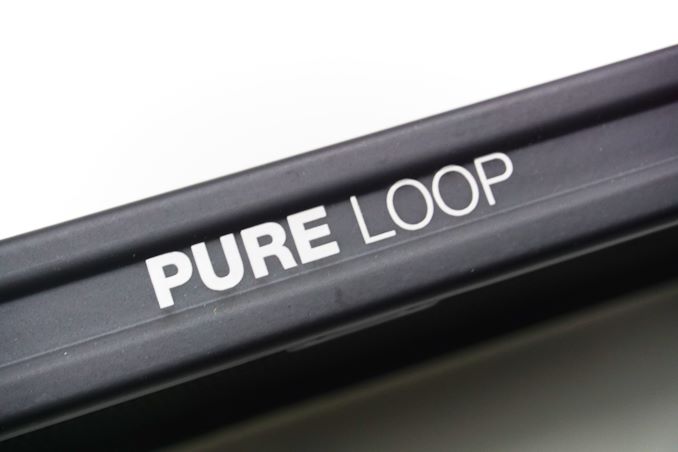
Be Quiet! is a German manufacturer that mainly produces PC cases, power supply units (PSUs), and cooling-related products. As the company's name suggests, their products are designed with a particular emphasis on quiet operation. The company is no stranger to the North American markets, slowly but steadily increasing their presence over the past several years. They are, in fact, one of the few EU-based companies that managed to maintain a foothold in the North American market during the pandemic.
Looking at their overall product offerings, Be Quiet! is a fairly typical PC peripherals manufacturer. The company is perhaps best known for for their impressive lineup of PSUs, while they also offer cases, fans, and coolers as well. And these days, that of course extends into all-in-one (AIO) CPU liquid coolers as well, with their Pure Loop family of coolers.
True to their design ethos, Be Quiet! has built the Pure Loop series to operate with as little noise as is reasonably possible. And unlike some other players in this space, the company isn't trying to make the Pure Loop a niche, high-end (read: expensive) offering; so the coolers are competitively priced for the mass market. Overall, the Pure Loop series consists of four coolers, ranging from 120 mm and 240 mm in size up to 280 mm and 360 mm. All four coolers are, as is usually the case, practically identical with the exception of the radiator size.
For today’s review, we are taking a look at the 280 mm version of the Pure Loop AIO cooler, which is the second largest that the company offers, and anecdotally seems to be the most popular size for AIO coolers right now.
Packaging & Bundle
The Pure Loop cooler ships in a sturdy cardboard box that, alongside the custom internal inserts, provide excellent shipping protection. It is aesthetically dark and dim, much like nearly all of Be Quiet!’s product boxes, but with a wealth of information regarding the cooler to be found on the sides and rear of the box.
The items bundled alongside the Pure Loop cooler are fairly basic. Inside the box, we found the necessary socket mounting hardware, a small syringe with a little thermal grease, adapters for powering the fans, and a few cable ties.
The surprising addition here is a bottle of coolant, which is very rare for an AIO cooler. For as we will see in our technical breakdown, the Pure Loop is not a traditional sealed loop cooler, so users can manually replenish and replace its coolant.
The fans provided alongside the Pure Loop cooler are Be Quiet!’s own Pure Wings 2 PWM fans. As expected, two 140 mm fans are supplied with the 280 mm version that we are reviewing today. These fans have rifle bearings, which are remarkably quiet. They are the “high speed” version of the series, with a maximum speed of 1.600 RPM.
The Be Quiet! Pure Loop 280 mm AIO Cooler
The core design of the Pure Loop 280 mm AIO cooler looks fairly typical at first glace. Yet if you pay a bit more attention, there is a significant anomaly: the liquid pump is autonomous and not located on the main cooling block itself. The block merely serves as a heat exchanger between the CPU and the cooling liquid, with no moving parts at all.
Be Quiet! moved the liquid pump to up near the radiator, as an inline device. Although this probably bodes well for the longevity of the pump (as it is not directly exposed to very high temperatures) and it reduces the noise output by dampening its micro-vibrations, this approach also creates four more connection points. Typically, joints and other connection points are the weakest links in AIO cooler design, so the additional points here increase the chance for mechanical damage.
Be Quiet!’s engineers went with a very subtle and elegant design for the main block. The body of the block is mostly made out of plastic, supporting the copper contact plate. A decorative brushed aluminum overlay with the company’s logo covers the top of the assembly that has white LEDs subtly lighting its surround while the unit is powered.
The bottom of the main block assembly reveals a sizable octagonal copper block that is nickel-plated. Its finish is very smooth and free of imperfections. The block is large enough for most modern desktop processors, AMD's oversized Ryzen Threadripper excluded.
The radiator is a typical dual-pass cross-flow design, with tiny fins soldered on thin oblong tubes. At the bottom side of the radiator, there is one relatively large screw that serves as a filling port. Handling this requires care – the position of the screw forbids users from undoing it while the radiator is installed inside a system, or the cooler will drain into the system itself. The radiator needs to be placed such that the filling port is the highest point of the system, then undo the screw to add coolant. The series logo is printed on both sides of the radiator's frame.



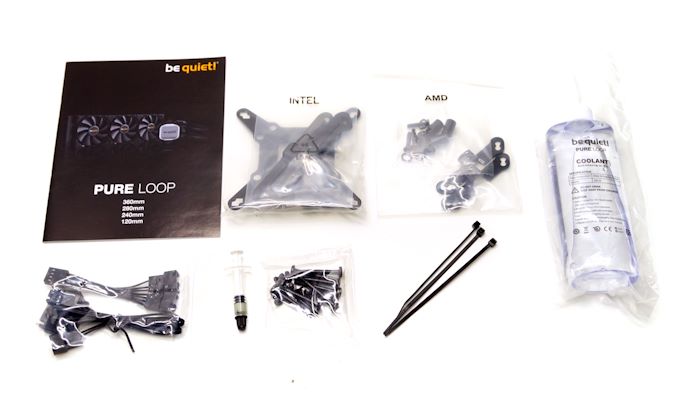
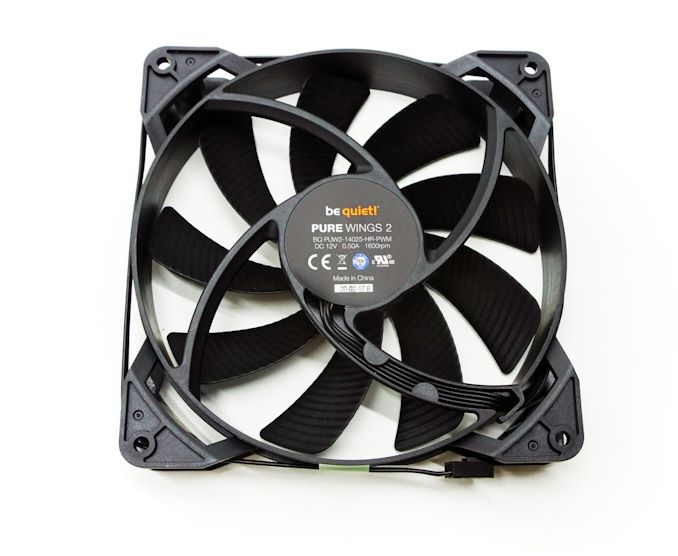

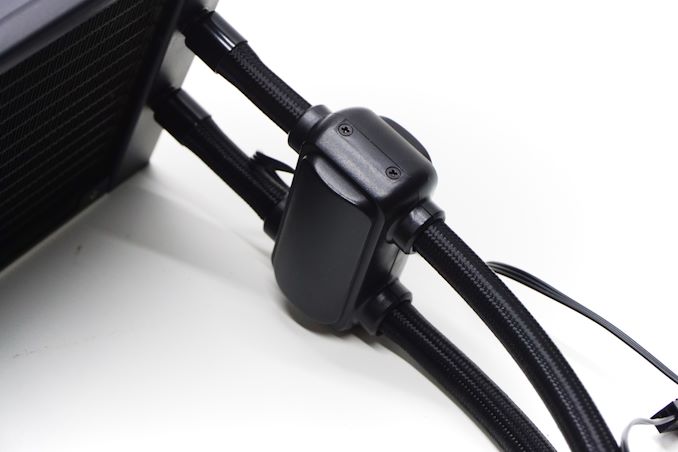
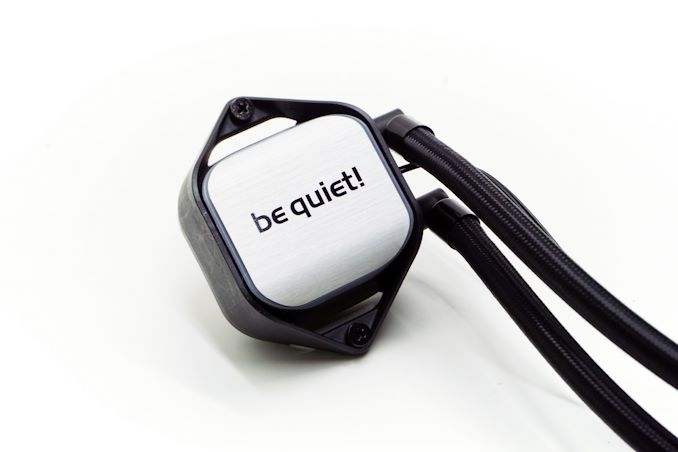
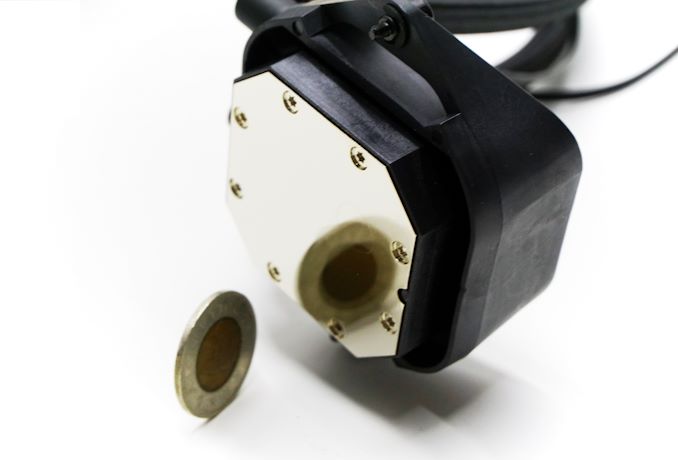
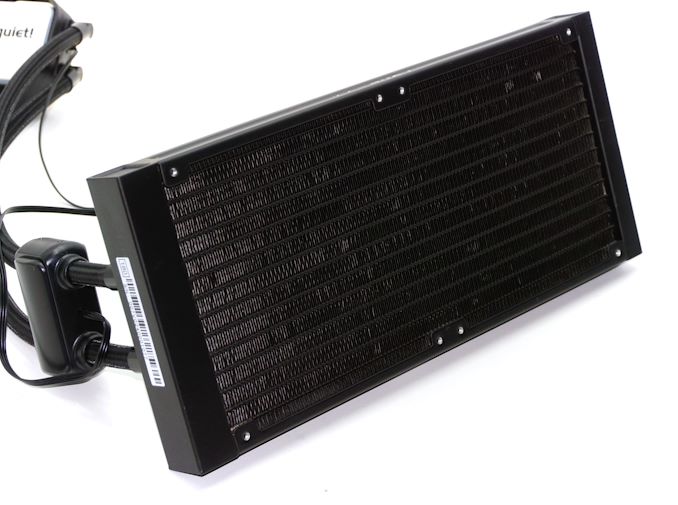








30 Comments
View All Comments
Alistair - Thursday, October 14, 2021 - link
I didn't read any clear distinction between pump noise and fan noise. Is the pump especially nice sounding or quiet also? Or just the fans run slower than the Corsair one, if so, Corsair is still a great option as long as the Corsair pump is quiet.Tom Sunday - Thursday, October 14, 2021 - link
Be Quiet is a fine company out of the Hamburg area in North Germany. Great to see the Germans now producing more high-quality goods for sale in the U.S and in the PC hobbyist world. I would most certainly buy from 'be-quiet' first and not Corsair who is satisfying their investors with mostly cheaper China goods all to making a bigger buck and over-marketing their products. As to cooling, the AIO market has always been way overpriced and much overrated; their pumps have never been perfected after all this time. And do I really care if my PC runs 10 degrees hotter? My Noctua D15 has been with me now for 10-years and straddled three completely new system builds. No downtime. I am now ready for Alder Lake with a Z690 Asus Hero MB, DDR5 and stuffed into a EATX. No doubt the 'be quiet' Dark Rock TF2 is on the bill and in 2022 my first cooler replacement in 11-years. Greetings from Stehekin, WA where you have to make things count!Oxford Guy - Friday, October 15, 2021 - link
My Corsair H50 exploded, destroying a video card and making a huge mess. Somehow the motherboard survived.COtech - Sunday, October 24, 2021 - link
These Be Quiet coolers are made in China just like the Corsair ones.Purpose - Friday, October 15, 2021 - link
This is a U-Flow radiator, not cross flow.docbones - Friday, October 15, 2021 - link
Would love to see how it compares to the Ice Giant. (for noise and cooling)SuperMover - Saturday, October 16, 2021 - link
Super Mover provides delivery services for all types of goods, products, appliances for homes and offices in Dubai Get the lowest prices on a single day delivery. Make your shipment with us today.https://www.supermovers.ae/
Jasonovich - Monday, October 18, 2021 - link
Be Quiet! Pure Loop 280 cooler looks aesthetically pleasing but where's the RGB. Not asking disco but customised cases have to look good looking into the window.Off the subject, Noctua the pinnacle manufacturers of coolers, why don't they do AIO?
ltkAlpha - Tuesday, October 19, 2021 - link
A must-have feature that I'm looking for in AIOs is the ability to link fan speed to water temperature, as you don't need to hear the fans spin up over every load spike - they do so very gradually with load. I would go so far as to say that with AIOs, for the vast majority of people, that's the key differentiating feature of water cooling. Unfortunately most reviewers completely ignore the presence of the feature (curiously, many of the brands don't actively market the feature either), so benchmark results end up being of limited usefulness to me, since a) I don't care how an AIO sounds @100% fan speed - I want to know how loud they are when temperatures stabilize at a given CPU wattage and b) I don't care about half of the products presented, so to me the comparisons are apples to oranges.Keljian - Saturday, December 4, 2021 - link
There are two brands that I know of that have this feature, Corsair and nxzt. Interestingly though the fluctuation in temperature of coolant (the band of high/low) is not big, maybe 20C or so.I actually have a thermal probe on the top fin of my D15 and the max temp when the cpu is going ballistic is about 35C or so at 20C ambient. The cpu (overclocked) however is up around 80C. I have found that having the fan ramp up for more airflow doesn’t actually make a huge difference to the temp either, some airflow is good, but it caps out pretty quickly.